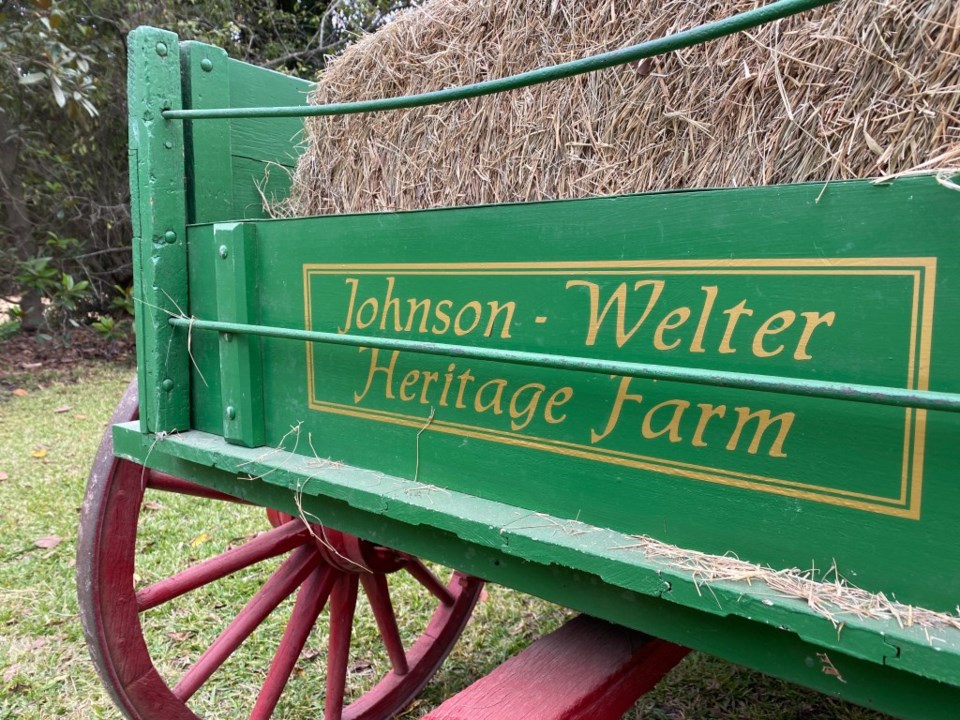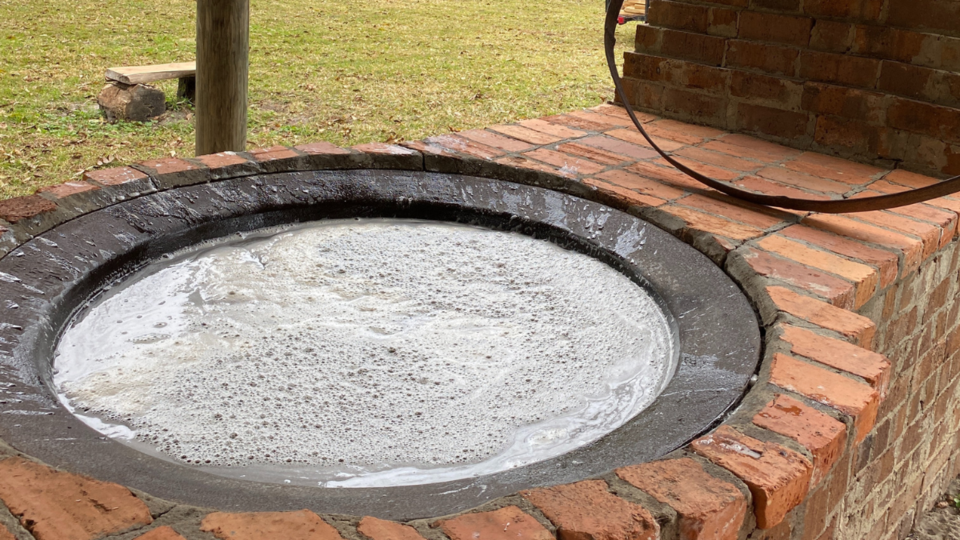If you spent your growing-up years in Bulloch County or have taken a stroll past the syrup hut at the Kiwanis Ogeechee Fair any time in the last 60 years, you probably know the unmistakable smell of boiling cane juice. Love it or hate it, cane syrup is as rich in history as it is in flavor.
For those, like me, who have been uneducated in the process: sugar cane is grown in the field and ground by mill to produce cane juice. The juice is then collected in buckets and carried over to a syrup shed to be boiled down in a large iron pot to make cane syrup. Historically, cane syrup was the only way Southern people were able to sweeten many of their dishes and recipes.
One local family has set out to preserve the tradition of the cane grind and boil by inviting community members to their historic farm each year for fellowship around the syrup pot.
Dave and Carrie Welter of the Johnson-Welter Heritage Farm take great care to make each year's grind a memorable experience, and they were kind enough to invite me and my family to their 2022 event. From the initial invitation all the way through the events of the chilly fall Saturday itself, we felt nothing but welcome and appreciated by this family, and I was grateful to learn more about the history of their farm and the grind.
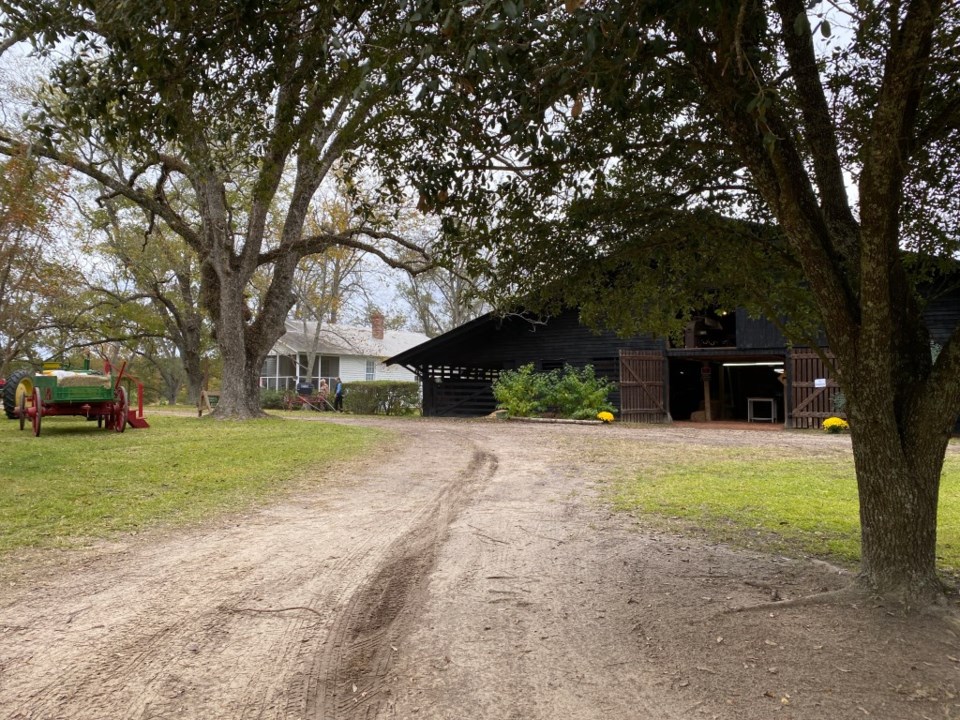
Saving the Family Farm
Carrie (Johnson) Welter, daughter of Paul H. and Minnie B. Johnson, grew up on her parents' farm on Woodrum Road, just one quick turn off Highway 80/25 heading toward Hopeulikit. Today, it stands remarkably similar to the way it did in 1930, and you've probably driven right by it a hundred times without even realizing it's there.
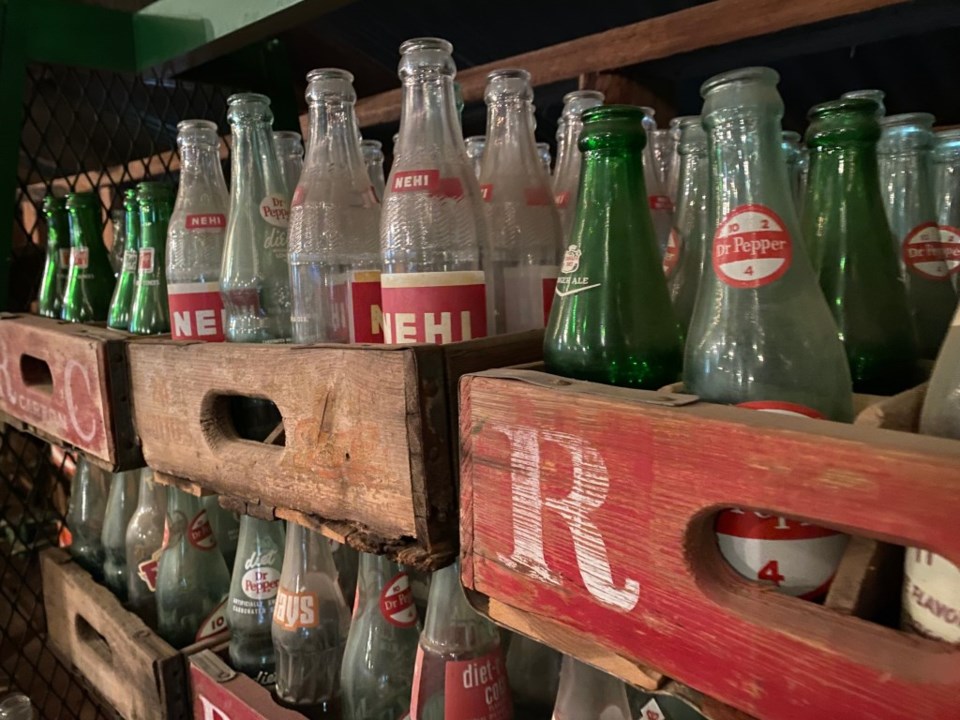
When Carrie's parents died, the farm property was split up between the Johnson siblings. (Carrie is the youngest of the family, having graduated from Statesboro High School in 1960.) With her husband Dave's help, Carrie set out to begin restoring the portions of the farm and its buildings that were left to her -- a true labor of love.
The Central Savannah River Land Trust tells more of the story better than I could.
...after purchasing the land in 1930, Paul moved his family into a tenant home on the property while the family house (which came complete with a fancy indoor bathroom) was built. There, Paul ran the farm, Carrie’s mother, Minnie, ran the local store, and together they started a family. Carrie still holds many fond memories of climbing trees and collecting eggs from the chickens that once lived in an old railroad car on the farm.
"Saving the Family Farm," Central Savannah River Land Trust
When Minnie passed away, the farm was divided between Carrie and her four siblings. Carrie’s portion, as luck would have it, contained the family’s house, a little train depot, and other historic buildings. This was doubly lucky because her husband, Dave, not only shares Carrie’s appreciation for her family’s heritage, but he has a passion and a great talent for historic restoration. He, too, soon fell in love with the farm and even moved the tenant home, where Carrie was born, to their portion of the property.
As the couple began to restore Carrie’s childhood home, the history of the farm began to unfold before their eyes. As it turns out, at the turn of the last century, Bulloch County was the number one producer of Sea Island cotton in the world. This explained the old railroad car where Carrie collected eggs as a child, as well as the historic train depot and the exceptionally large mule barn that still stands on the farm today. Local farmers used mules to haul their cotton harvest to the train depot, where it was loaded onto rail cars bound for the world’s markets. And Carrie’s little family farm was the hub of it all.
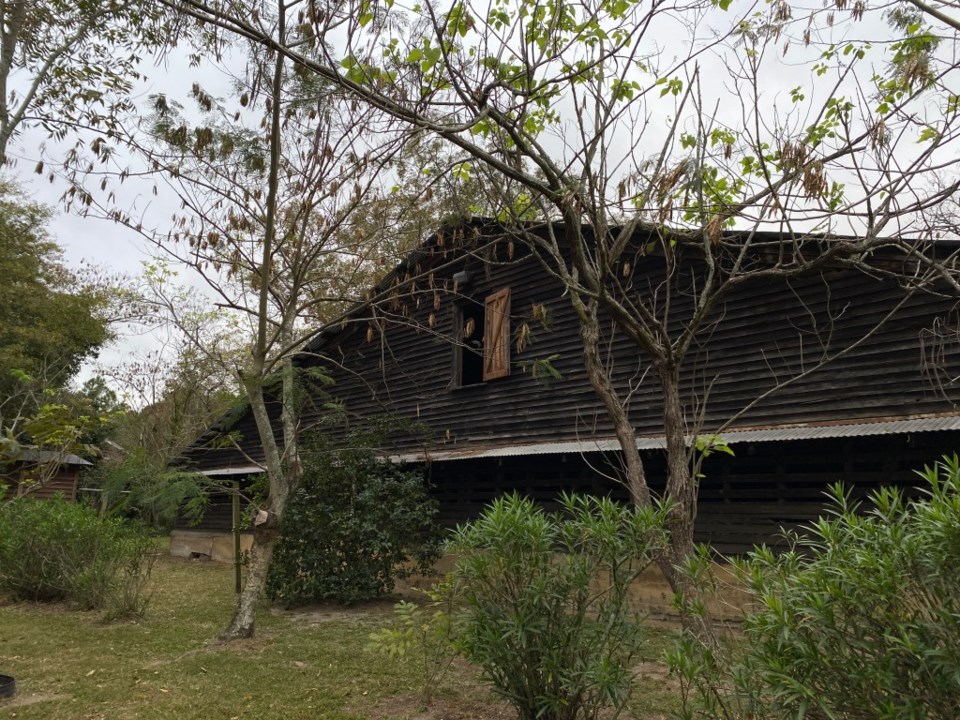
The rest is now well preserved history.
Resurrecting the farm and its traditions
After the Welters put sweat equity into the farm to get it restored to their liking, they began holding community events there, making it a social hub once again. They dedicated the restored mule barn to Carrie's father in the fall of 2008 and began holding an annual barn dance there around that same time.
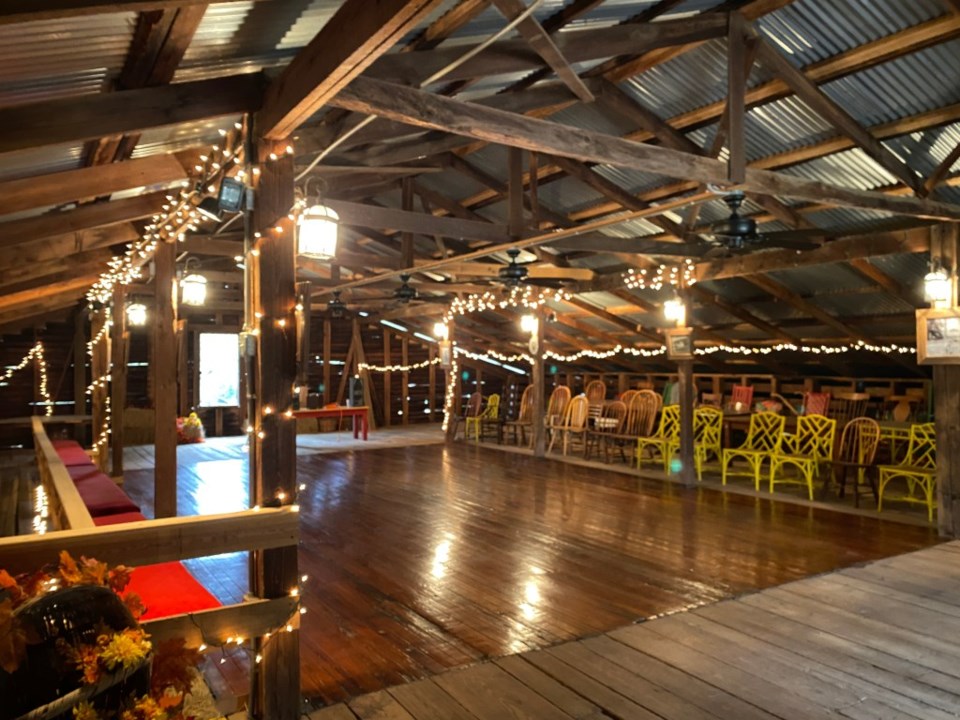
While they were renovating the barn, a worker also found parts for the Johnsons' old cane mill. (If you're not familiar with a cane mill, it's certainly a rudimentary looking contraption. The grinding gears are on the interior, powered from the top by the slow rotation of mules or a tractor, either of which is tethered to a hefty tree trunk atop the gears. The sugar cane stalks are fed into the gears by hand, and the pressed cane juice runs down a wide spout into a waiting receptacle.)
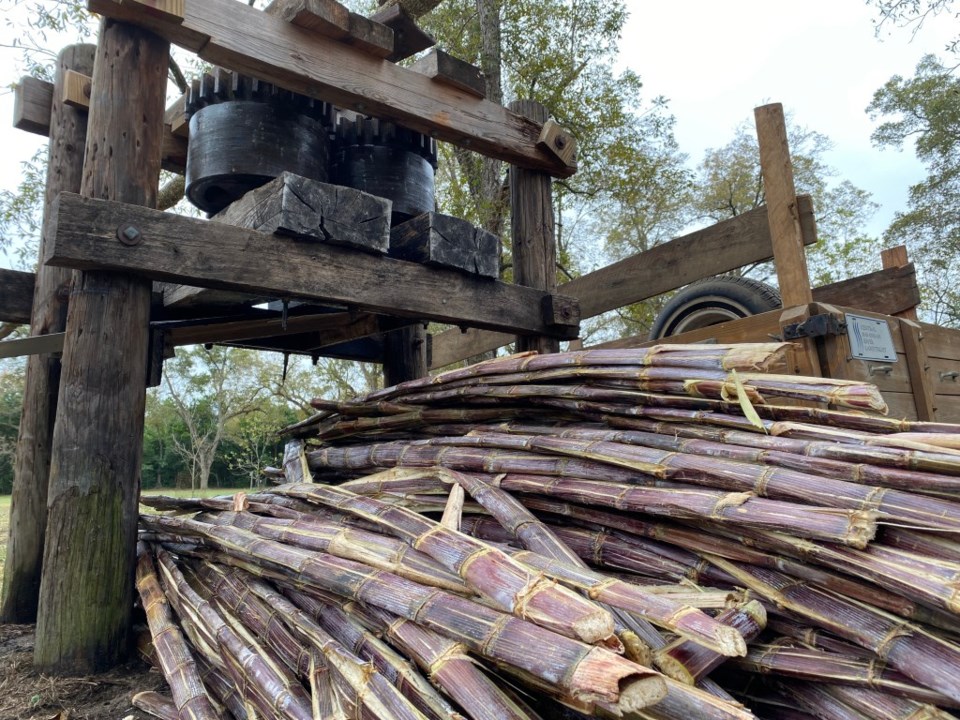
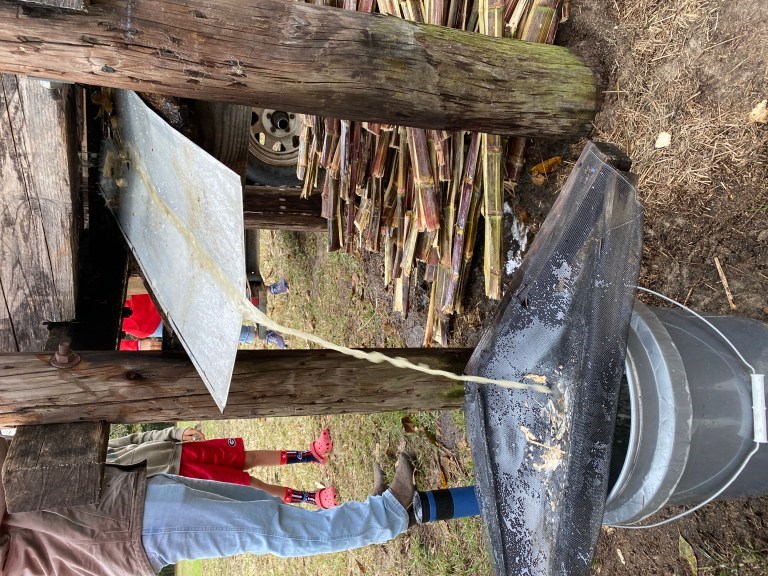
The discovery of the mill parts led to the Welters' next project. In 2012, Dave resurrected the cane grinder and then began construction on a syrup shed to go with it, located just behind the mule barn. Dave built the shed with a chimney, flue, and setting for a syrup pot. I asked Carrie if the pot in the shed now was original to the farm, and an interesting story unfolded.
Did you know that on Sherman's March through Georgia, syrup pots were a frequent target of his destruction? His troops would often crack the syrup pots they found in homes to render them useless to the poor Southerners, and that history makes an intact syrup pot a hot commodity today, no pun intended.
The Welters were able to find a usable pot not too far afield in Kite, Georgia (just a hop over to Johnson County), for about $300. They got it installed and got ready to hold their first cane boil in 2015.
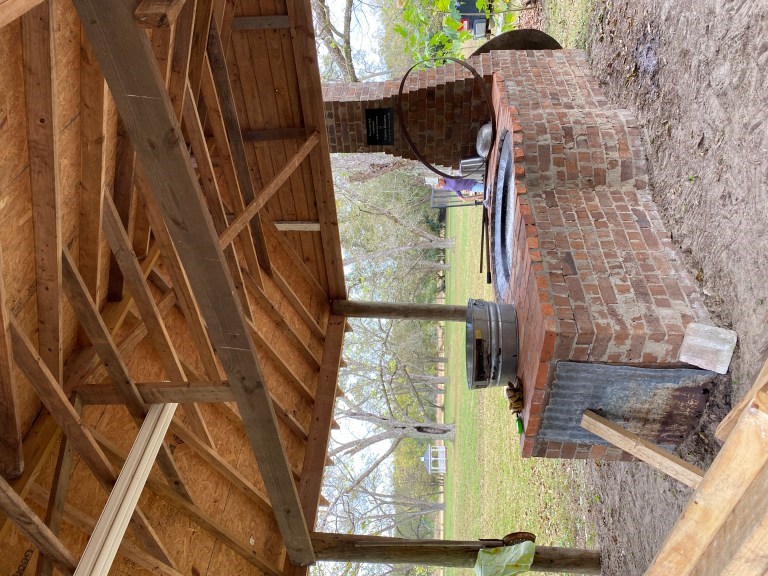
Interestingly enough, though, Carrie's family grew and ground their own sugar cane "back in the day," but they didn't boil it themselves.
"Daddy would grow and grind the cane," Carrie shared. "But he would take his cane juice down to Mr. Woodrum, and Mr. Woodrum would boil it. It was a community type of thing."
So once the syrup shed was in place, they actually needed a little help with the boiling part of the equation. As luck would have it, one of the workers who helped with the barn restoration, Willie Williams, had a sister-in-law who knew all about it.
That sister, Catrina Ellis Hampton, ran the first boil and taught them everything they needed to know. Sadly, Catrina died of COVID in the fall of 2020, and the syrup shed now bears a plaque dedicating it to her memory -- a testament to all she did to help re-establish the cane boil tradition on the property.
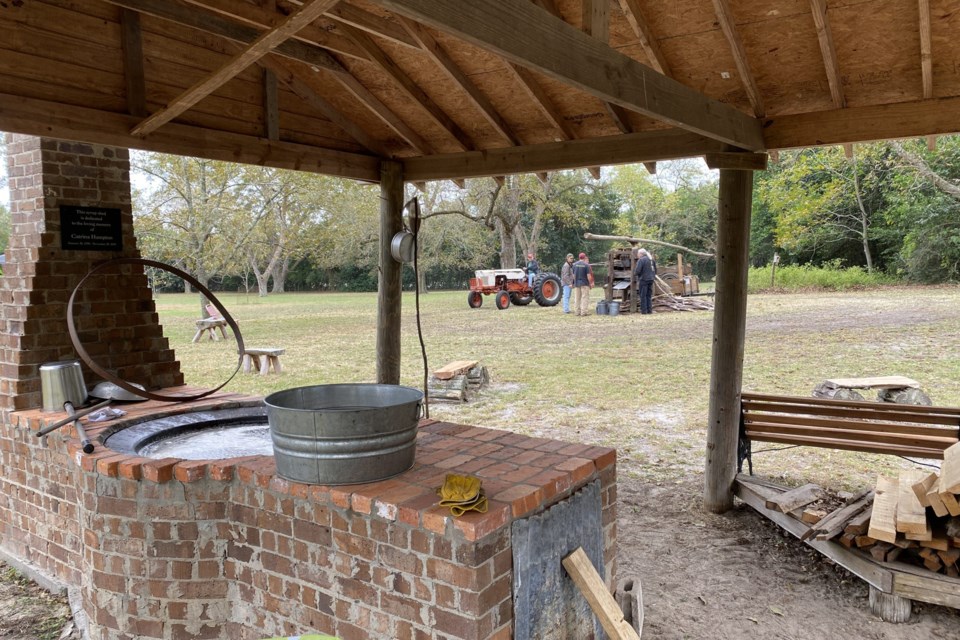
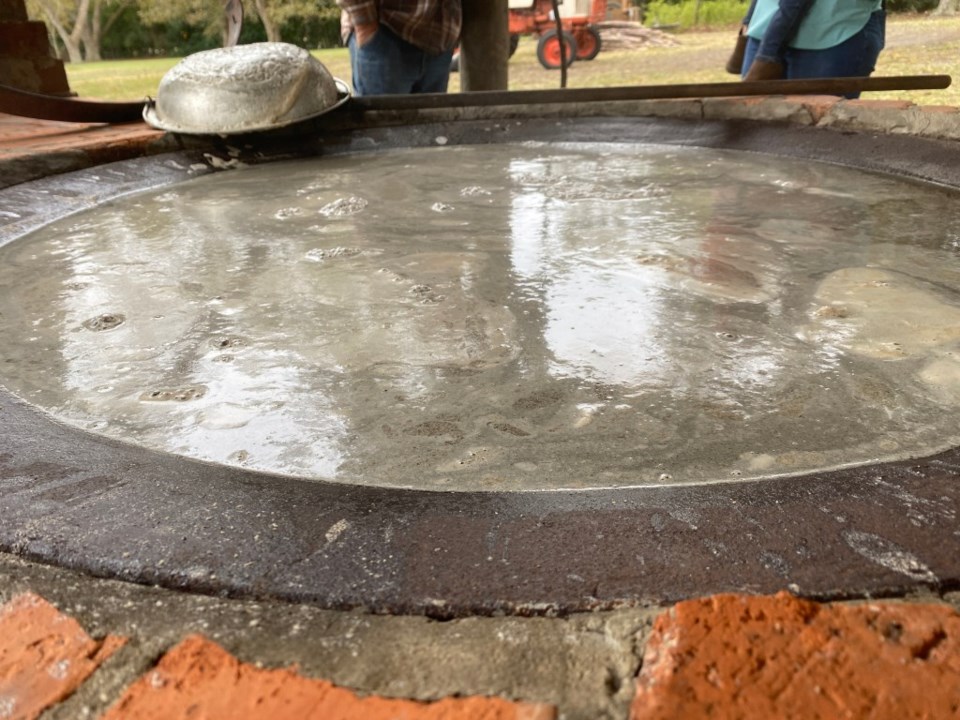
These days, the Welters welcome Steven and Tracye (Corley) Gordon, of Glennville, to run the boils for them. (The Gordons also put syrup on to boil at the Ogeechee Fair.)
With the Welters' dedication, the cane boil is once again a social event where people can gather and enjoy food, fellowship, square dancing, and the warm smell of cane juice on the farm. (You're also invited to sip on the raw cane juice, but don't drink too much. Ask your grandmother why not!)
"Just seeing people come in and enjoy themselves makes all the hard work worth it," Carrie said.
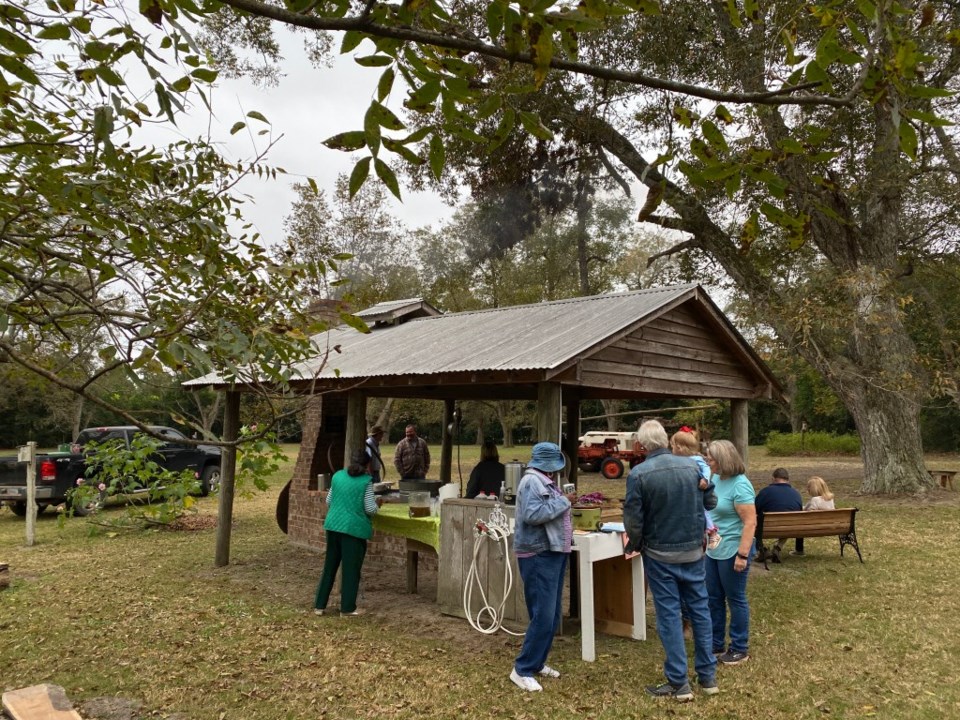
Tradition and sharing
Carrie says that if you ask her and her husband why they do all of this, when it truly takes a lot of time, money, and effort, you'll get two different answers. But I happen to think their reasons make for as happy a marriage as Dave and Carrie seem to have.
Dave says, "It's tradition," and Carrie says, "It's to share."
"I want people to feel welcome to enjoy the scenery and greenspace," Carrie said, noting that she routinely invites friends who are passing through on their travels to just stop by and rest there for a few. "God has blessed us with this beautiful property and these wonderful buildings, and we want to share them."
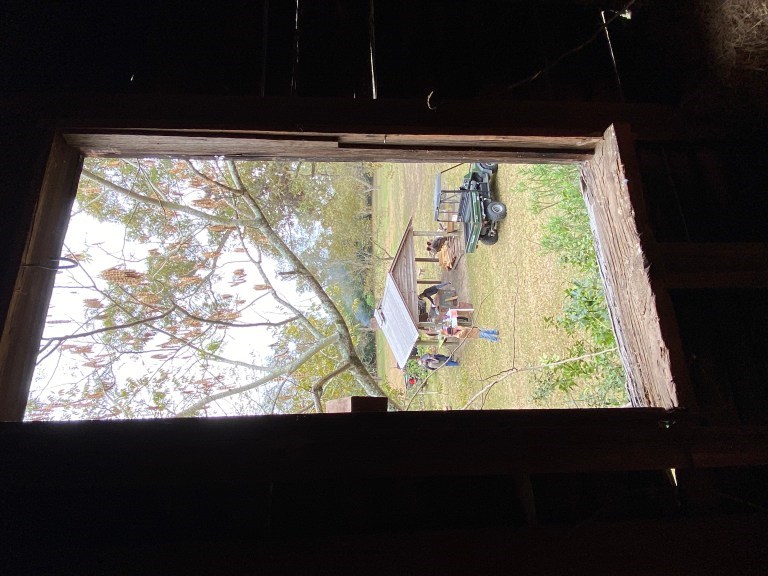
In that spirit, the Welters offer the farm as a resource for the community -- making it available for events from weddings and photoshoots to field trips and family outings.
They'll both be happy for many years to come, too, as the farm is now protected under state conservation easement and can never be developed. The Welters are passionate about keeping their piece of history alive for generations ahead -- both for tradition and for sharing.
Marrying progress with history
As Bulloch and Bryan Counties continue to grow at what sometimes feels like an exponential rate, some may fear a loss of the tradition and history that make us "who we are." This is a feeling that Carrie understands well.
At one point, one of Carrie's siblings decided to sell a piece of property directly adjacent to the farm, and it was developed into apartments. She wasn't happy.
"When the apartments were built, I was so concerned," she said. "I really had a bad attitude. But one day, I said, 'You know, the Lord really doesn't want me to act this way.'"
Instead of harboring bitterness, she went over to those apartments and invited the children living there to come and play in the greenspace they still owned right in front of the buildings. She also invited them to come take a look at the farm any time. She realized it was actually just another opportunity to share the land she and Dave had been blessed with.
"I told them, 'The Lord has spoken to me, and I understand you have as much right to be here as I do,'" Carrie shared.
And with that, she and I agreed that history and tradition can happily coexist with progress, even on the same plot of land -- as long as special families like the Welters are working to preserve it.
